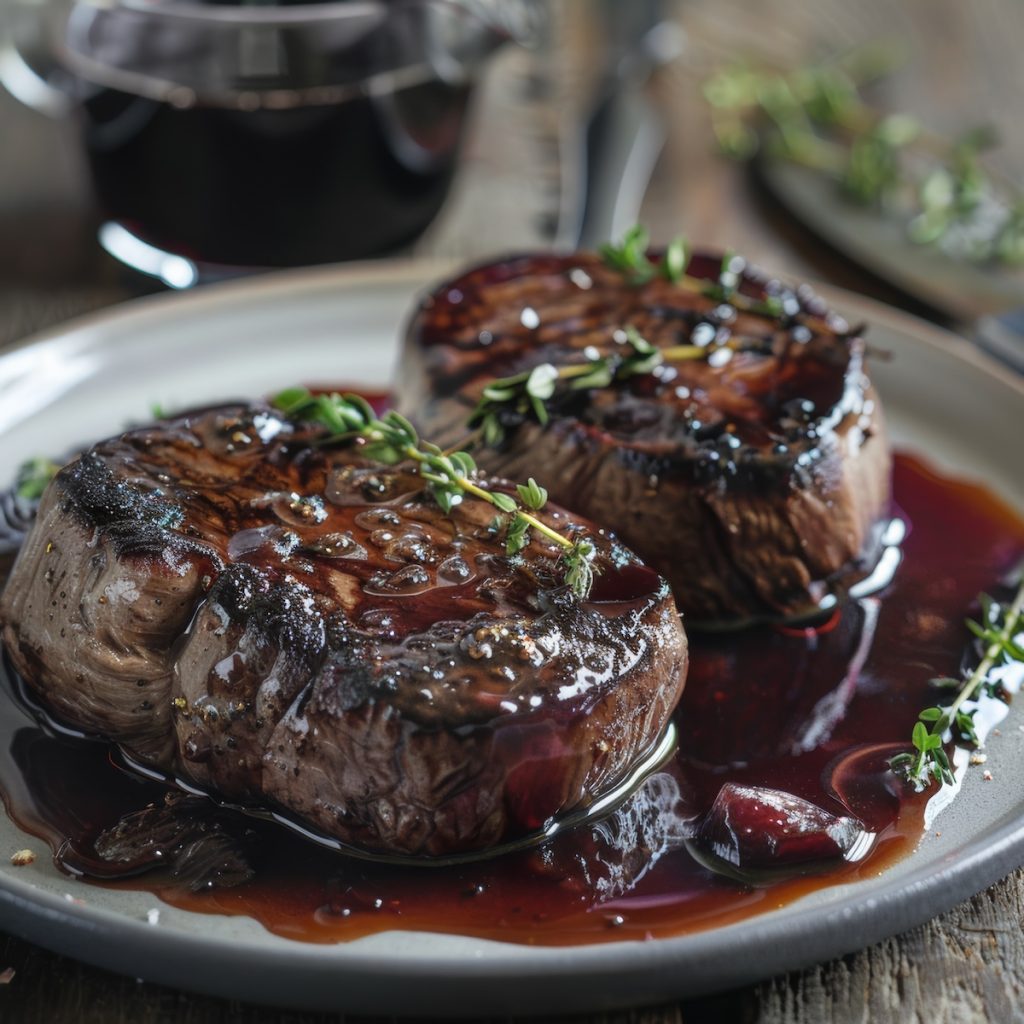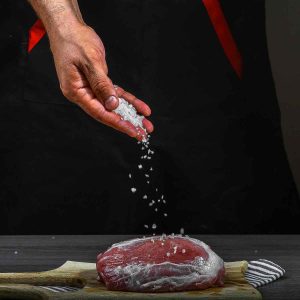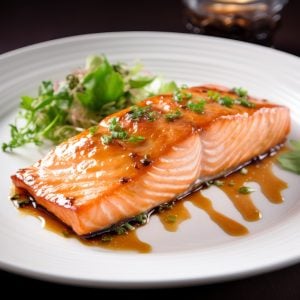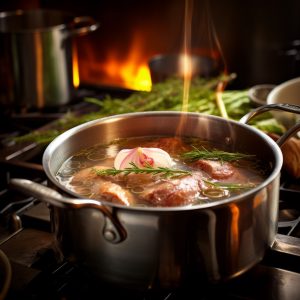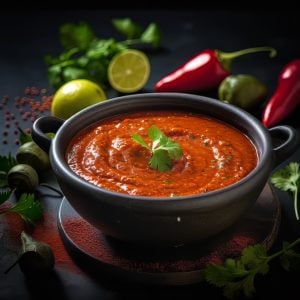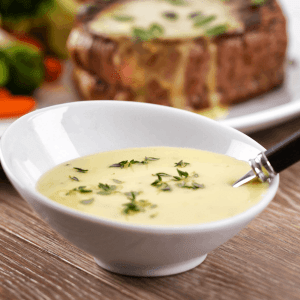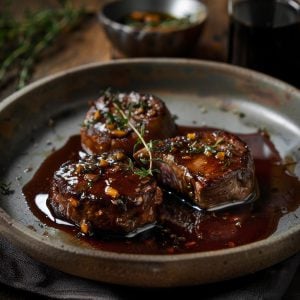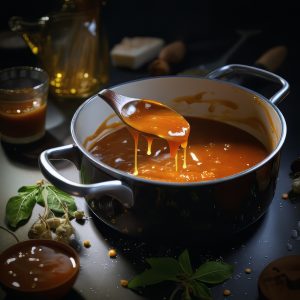How to Make Restaurant Quality Burgundy Sauce
If you’ve never made Burgundy sauce at home, you’re in for a treat. This rich, velvety sauce brings restaurant-level depth to your table and is easier to pull off than you might think.
With a bottle of good red wine (Burgundy if you have it, but any dry red will do), some aromatic shallots, a touch of stock, and a little butter to bring it all together, you’ll have a sauce that’s perfect for spooning over steaks, roasts, or even hearty vegetables.
The beauty of Burgundy sauce, known as “sauce marchand de vin” in French, lies in its balance—bright acidity from the wine, subtle sweetness from the shallots, and a luxurious mouthfeel from the butter. Originating from the Burgundy region of France, this sauce is a testament to the country’s culinary prowess and tradition.
You can take it in a few directions too: finish it with herbs, enrich it with cream, or keep it classic and let the wine shine. The key is to reduce the sauce gently, allowing the flavors to concentrate without becoming harsh.
Once you master this simple technique, you’ll want to make it again and again. Ready to elevate dinner tonight? Let’s dive in.
Classic Burgundy Sauce
Ingredients
- 1 shallot minced
- 1 tablespoon butter
- 2 cups red wine Burgundy if available
- 1 bouquet garni
- 1 cup demi glace
- salt and pepper to taste
Instructions
- Sauté the shallot in butter over medium-high heat until translucent.
- Add the red wine and bouquet garni. Reduce by two-thirds.
- Add the demi-glace and reduce until the sauce is thick enough to coat the back of a spoon.
- Season with salt and pepper.
What to Serve with It
Burgundy sauce is incredibly versatile and pairs exceptionally well with various dishes, particularly those featuring red meats and hearty flavors. Some of the best dishes to serve with it include:
| Dish | Why It Pairs Well with Burgundy Sauce |
|---|---|
| Grilled or Pan-Seared Steaks | Adds elegance and richness; enhances the beefy flavor with a luscious finish. Perfect for tenderloin, ribeye, or sirloin. |
| Roast Beef or Prime Rib | Complements the juiciness of the meat with deep, savory notes. Ideal for holiday dinners and special occasions. |
| Braised Short Ribs | Provides depth and complexity, coating the tender meat in a luxurious sauce for a memorable meal. |
| Coq au Vin | Enhances the dish’s savory flavors in this classic braised chicken dish with mushrooms, onions, and bacon. |
| Beef Bourguignon | Essential to the dish, delivering richness and depth to the tender beef and the stew’s overall flavor. |
| Lamb Chops or Rack of Lamb | Matches the robust flavor of lamb, elevating it to a sophisticated, indulgent dish whether grilled, roasted, or pan-seared. |
| Mushroom Dishes | Brings rich, savory notes to vegetarian dishes like mushroom bourguignon or risotto, perfectly complementing earthy mushroom flavors. |
Burgundy Wine
One key component of burgundy sauce is the quality of the wine used. Burgundy wine, made from Pinot Noir grapes, imparts a distinct flavor profile characterized by cherries, berries, and earthy notes. This lends the sauce its unique depth and complexity. However, other red wines with similar characteristics can also be used to create a delicious sauce variation.
Burgundy sauce is a culinary chameleon, gracefully adapting to a variety of dishes. It’s a perfect companion for beef, lamb, or game meats, transforming simple grilled steaks into gourmet delights. Whether drizzled over roasted meats or used as a dipping sauce for hearty cuts, it adds a touch of elegance and sophistication to any dish.
Beyond its application in meat dishes, burgundy sauce can enhance vegetarian and vegan fare. It adds depth of flavor to mushroom dishes, such as mushroom bourguignon, and can be used as a sauce for vegetable gratins or roasted root vegetables.
In French cuisine, burgundy sauce is considered a staple, beloved for its depth of flavor and ability to elevate dishes to new heights. Its rich history and timeless appeal ensure that it will remain a cherished component of the culinary repertoire for years.
History of Burgundy Sauce
The history of burgundy sauce is deeply rooted in the culinary traditions of France, particularly in the Burgundy region from which it takes its name. While exact origins are somewhat elusive, the sauce likely emerged in the 19th century, coinciding with the rise of French haute cuisine.
Burgundy sauce’s foundation lies in the rich culinary heritage of France, where wine has long been revered as a key ingredient in cooking. The Burgundy region, renowned for its exceptional red wines made from Pinot Noir grapes, naturally became a focal point for culinary innovation involving wine-based sauces.
The sauce was likely originally developed to utilize the abundant wine in the Burgundy region. By combining wine with aromatics such as shallots, garlic, and herbs, cooks created a sauce that complemented local dishes’ flavors and added depth and complexity.
Over time, burgundy sauce evolved into a staple of French cuisine. It found its way into classic dishes like coq au vin and boeuf bourguignon, where it became synonymous with richness and depth of flavor. As French cuisine gained international acclaim, so did burgundy sauce, spreading its influence to kitchens worldwide.
While traditionally made with Burgundy wine, variations of burgundy sauce emerged using other red wines with similar characteristics. This adaptability contributed to the sauce’s enduring popularity and allowed it to be incorporated into various dishes beyond French cuisine.
Today, burgundy sauce remains a beloved component of culinary repertoire, cherished for its rich flavor and versatility. Its history reflects the ingenuity and creativity of French cooks, who transformed humble ingredients into culinary masterpieces that continue to delight palates around the globe.
Adding Demi Glace to Burgundy Sauce
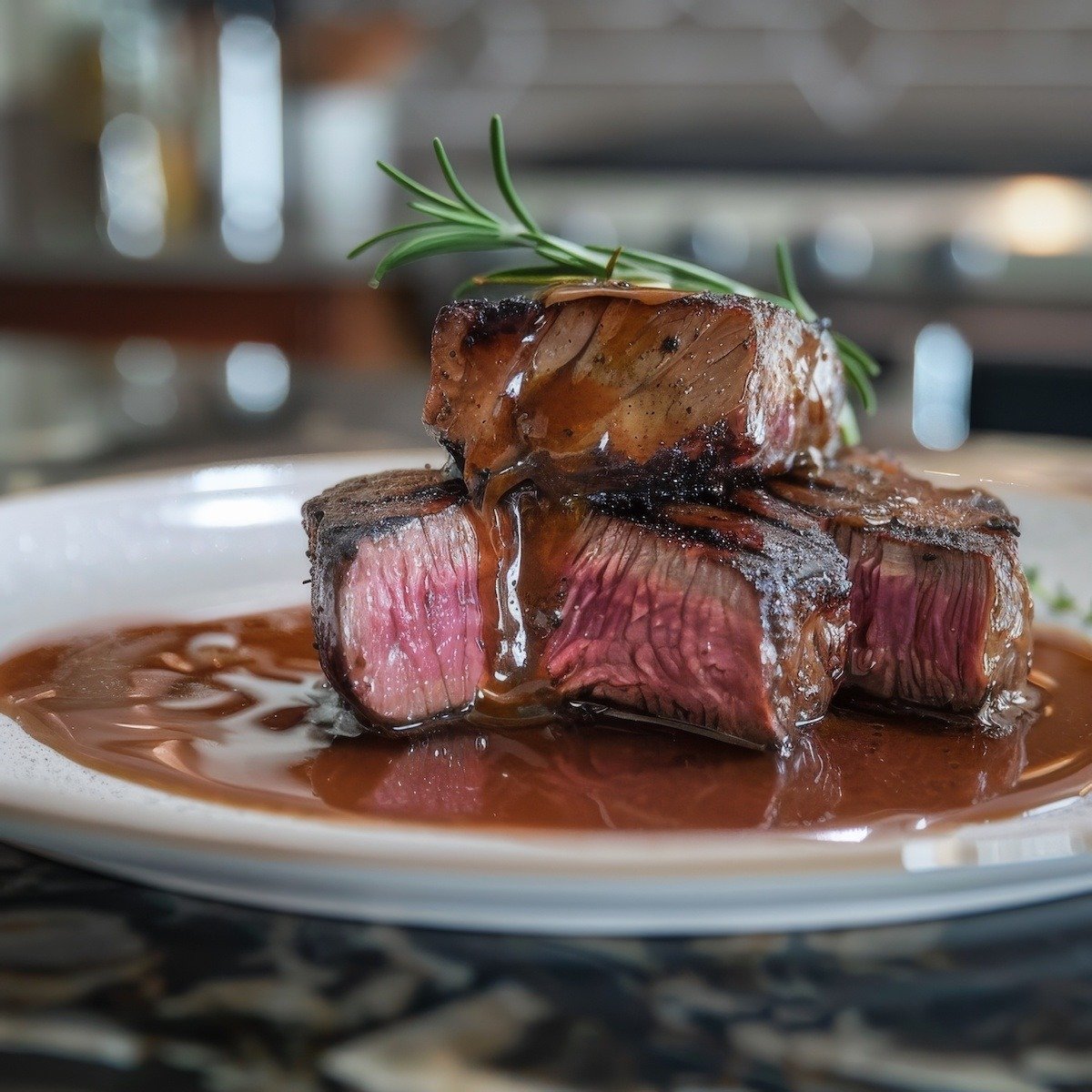
Incorporating demi-glace into burgundy sauce would elevate its richness and deepen its flavor profile, resulting in a luxurious sauce with unparalleled depth. Demi-glace, a reduction made from veal or beef stock, fortified with wine and aromatics, is prized for its intense flavor and velvety texture. Combined with burgundy sauce, it would create a harmonious marriage of flavors, enhancing its complexity and richness.
Adding demi-glace would further intensify the sauce’s savory notes, providing a robust base that complements the fruity and earthy nuances of the red wine. The gelatinous quality of demi-glace would also lend a silky mouthfeel to the sauce, adding a luxurious texture that coats the palate.
Moreover, demi-glace would contribute to the sauce’s viscosity, helping it cling to whatever it’s served with, whether a perfectly seared steak, roasted lamb chops, or a medley of sautéed mushrooms. This enhanced clinginess ensures every bite is infused with the sauce’s sumptuous flavors.
Adding demi-glace to it opens up a world of culinary possibilities. It can create elevated versions of classic dishes, such as boeuf bourguignon, where the sauce becomes the dish’s star, enveloping tender beef and hearty vegetables in a luscious embrace. It can also be drizzled over braised short ribs or served alongside seared duck breast for a decadent dining experience.
Furthermore, the versatility of burgundy sauce with demi-glace extends beyond meat-based dishes. It can elevate vegetarian and vegan creations, such as lentil or mushroom Wellington, adding depth and complexity to plant-based proteins.
Adding demi-glace to burgundy sauce enhances its richness, depth, and versatility, creating a culinary masterpiece that elevates any dish it accompanies to gourmet heights.

